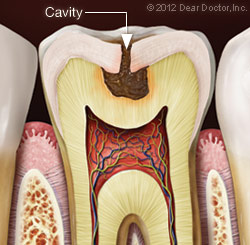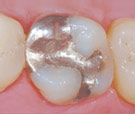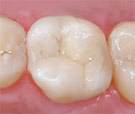
The goal of restorative dentistry is to return destroyed or lost tooth structure to full form and function. If you have a filling, crown, or dental implant, you have already benefited from restorative dentistry.
Today’s dentists have superb ways of repairing decayed teeth. Besides traditional silver amalgam or gold alloy fillings, composite resins and dental ceramics have come on the scene that are as durable as they are beautiful. These materials can be used to create tooth restorations that are virtually indistinguishable from natural teeth.
Here are some of the restorative procedures we provide to help you achieve the strongest and best-looking teeth possible:
Fillings

Fillings do just what the name implies — seal a small hole in your tooth, i.e., a cavity, caused by decay. This prevents the decay (a bacteria-induced infection) from spreading further into your tooth and entering the sensitive inner root canal — a condition that requires root canal treatment.
To fill a tooth, we first clinically examine it and review x-rays to determine the extent of the decay. Then we remove the decayed area of the tooth, usually with a dental drill or another handheld instrument. Your tooth will be anesthetized first, so you won’t feel anything. If numbing injections normally provoke anxiety for you, please let us know; we can discuss medication that can help with this. After we remove the decay, all debris is cleaned from the tooth, and then the filling material is applied.
Fillings can be divided into two broad categories: metal and tooth-colored.
Metal Fillings

Tooth-Colored Fillings
Inlays & Onlays
When the damage done to a tooth by decay is too extensive to be treated with a simple filling, yet not significant enough to need a full-coverage crown, the best solution may be an inlay or onlay. These fillings are fabricated outside the mouth (usually by a dental laboratory) and then bonded to the tooth by the dentist. It is considered an “inlay” when the filling fits within the little points or “cusps” of a back (premolar or molar) tooth. It is an “onlay” if it covers one or more of these cusps.
In order to receive an inlay or onlay, the tooth and surrounding area must be numbed with a local anesthetic and the decay removed. We then take an impression of the tooth, either digitally or with a putty-like material, and send it to the dental laboratory, where the inlay or onlay will be made. We will attach a temporary filling to your tooth to protect it until the permanent restoration is ready. At your next visit, the permanent inlay/onlay will be attached to your tooth with either a resin that hardens under a special curing light, or a type of permanent cement. Inlays and onlays are strong, long-lasting, and require no greater level of care than any other tooth.